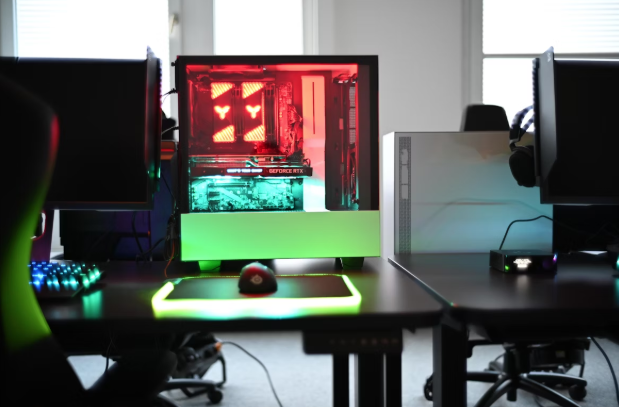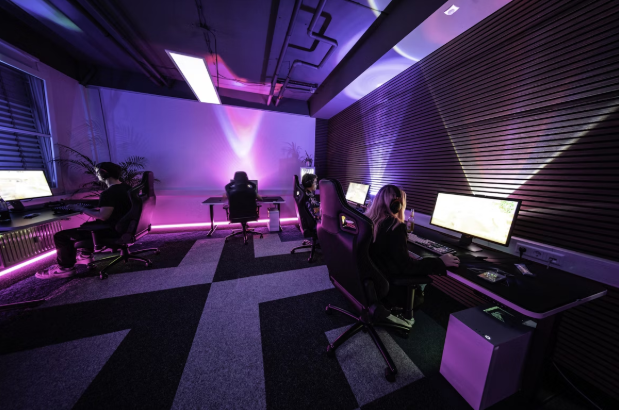
One of the most sought-after competitive shooters on the market is Counter-Strike 2 (CS2). However, it is also quite a demanding game for your computer. A well-executed optimization of your storage and system performance will significantly improve not only your gameplay speed but also your loading times, while also providing higher frames per second (FPS).
For numerous users, the modifications, although minor in the hardware as well as in-game settings, have the strength to change the mode of CS2 completely.
Why Storage Speeds Matter in CS2
Introducing the concept of storage as the leading player in the FPS boosting game seems rather odd. Most of the time, the focus is put on the graphics card or the processor as the cause of the FPS issue. Just as necessary, though, is the internal storage with which your computer is equipped. CS2 keeps on loading maps, textures, models, and sound files. A slow drive can lead to extended loading times, delayed texture rendering, or even micro-stutters in the middle of the game.
Relying on a standard HDD, you can upgrade to an SSD, or even better, NVMe. The speed will then be fast enough in both reading and writing to keep up with the game’s pace. Before you decide to upgrade, you should utilize benchmarking tools such as CrystalDiskMark. It provides you with exact numbers of your read/write speeds, which then allows you to gauge your current hardware against industry averages.
Once you realize the true capability of your disk, you can proceed to other settings, such as CS2 performance settings for FPS, that way the dual action of quicker data access and properly adjusted in-game settings will give you an installation with a still and trustworthy feel, wherein you can completely engross yourself in the game without the nuisance of a technical issue popping up.
Key Benefits of Faster Storage:
- Reduced Load Times: Locating matches and maps quickly improves your gameplay.
- Smoother Asset Streaming: When new textures or models are loading, there is no interruption of the game.
- Improved Responsiveness: Even performance with minimal stuttering.
Graphics Tweaks for Higher FPS
Once you are sure that your disk performance is at its best, the next step should be to increase the FPS to the maximum through the graphics settings. CS2 offers several methods to modify your graphics, which can directly affect your system’s performance.
- Shadows & Lighting: The most common way to get a lot of FPS increase is to lower shadow quality and turn off advanced lighting.
- Anti-Aliasing: Lowering or turning off this setting will give your GPU more power.
- V-Sync: The best thing about V-sync is that the input delay can be very low if you turn it off.
- Display Mode: Compared to windowed or borderless, full-screen mode always gives you more stable performance.
- Resolution: Higher FPS are usually possible in lower resolutions, but the picture will be less sharp. Many competitive players use stretched resolutions to achieve the most straightforward and fastest gameplay.
These FPS changes you made and checked before and after can show you clearly how much each of your modifications impacts the setup of your PC.
System-Level Optimizations
The performance improvements don’t end in the CS2 settings menu. By tweaking your operating system and background processes, you can also make resources available.
- Update Your GPU Drivers: Each time NVIDIA or AMD releases a new driver, it includes a part that directly benefits the performance of CS2, besides the game-specific optimizations in the rest of the drivers.
- High Performance Power Plan: If you do so, then during intense CPU loads, the processor won’t downclock itself due to thermal issues or lack of power. Therefore, under heavy usage, Windows will keep the CPU at its highest clock speeds.
- Limit Background Applications: Any unnecessary processes running on your PC, such as browsers with tabs open, YouTube or music apps, and heavy software, will consume parts of your CPU and memory. So, to have more CPU and memory available for CS2, you need to limit background applications.
- Optimize Your Drives: HDD Defragmentation speeds up file access.SSD: Execute TRIM commands to keep the drive working at the best level.
Advanced Launch Options & Configs

CS2 provides users with the option of using launch commands and autoexec configurations that can be set to run automatically for extra optimization. These are not a must but can help in getting the maximum performance:
- -novid: Leads to the omission of the intro video, thus quicker startup.
- -high: Works CS2 at a higher CPU priority.
- -tickrate 128: Just for offline training servers to be a proper match to the competitive environment.
- Custom autoexec.cfg: Enables you to save changes in the network, set FPS caps, crosshair, and more.
Even though these don’t have a direct impact on disk performance, they ensure the system runs smoothly, which is vital for performance.
Measuring Performance Gains
Optimization, in the proper sense, is only valuable if the results can be traced. So, it’s always a must to measure before and after applying changes.
- In-Game Counter: To enable FPS display, add cl_showfps 1 or net_graph 1 in CS2.
- System Monitors: MSI Afterburner is just the perfect tool to show CPU, GPU, and memory usage.
- Storage Benchmarks: CrystalDiskMark benchmarking is the source that can tell if the storage upgrade has made the expected improvements.
One can assess the potency of a given optimization strategy through the arrangement of these metrics.
When to Consider Hardware Upgrades
In case of off and settings tweaking, along with system optimization still not being sufficient, hardware upgrades should be the next thing to consider:
- SSD or NVMe Drive: The most significant difference will be in the case of loading times and smooth streaming.
- RAM Upgrade: The minimal recommended baseline for modern CS2 performance is 16GB of RAM.
- GPU Upgrade: It is a matter of utmost importance, specifically for the people playing at 144Hz or 240Hz refresh rate.
- CPU Upgrade: As Computer Science 2 is CPU-heavy, it is common that older processors limit the number of frames per second.
